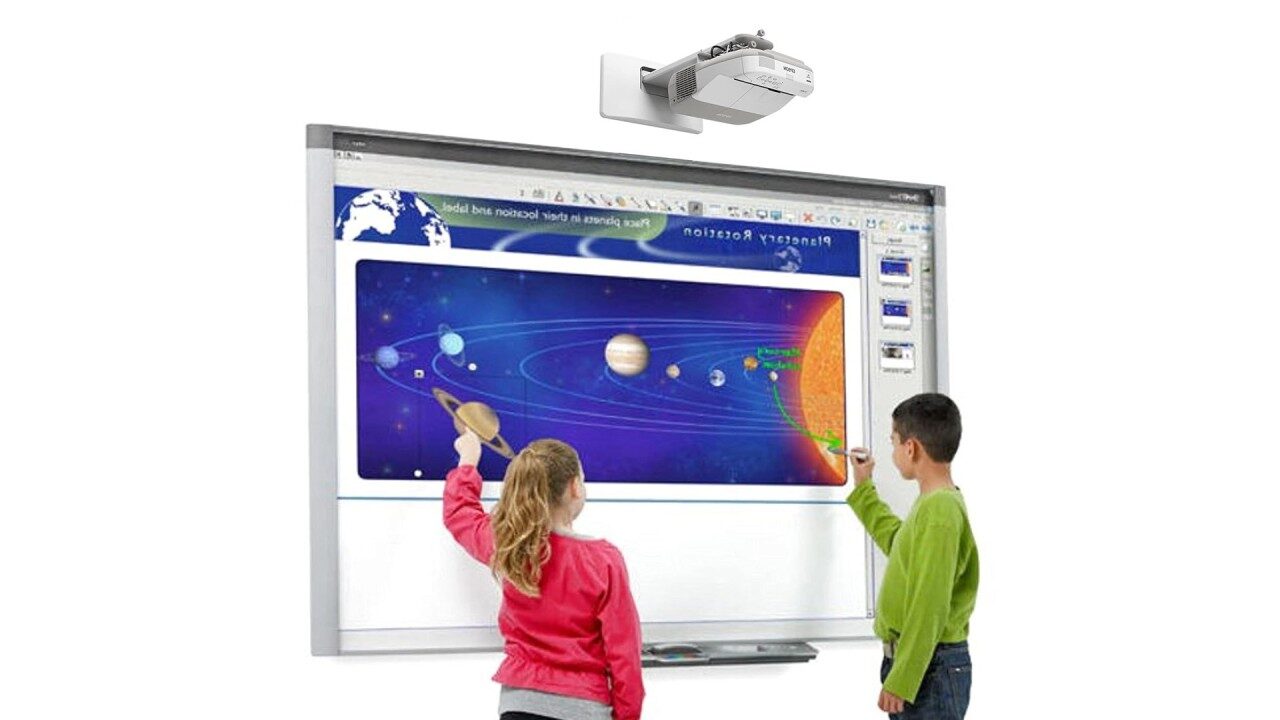As collaboration and learning continue to evolve, how can we adapt to new technologies that improve communication and productivity?
Digital interactive whiteboards have become essential tools, merging traditional whiteboarding with advanced features to enhance teamwork, creativity, and engagement in various environments.
What Is a Digital Interactive Whiteboard?
A digital interactive whiteboard is an electronic display that combines the functionalities of a traditional whiteboard with the capabilities of modern technology. It allows users to write, draw, and interact with content using touch gestures or styluses.
These boards often come with built-in software that supports various applications, including video conferencing, document editing, and cloud storage integration.
Key Features of Digital Interactive Whiteboards
- Touchscreen Interface: Most digital whiteboards feature high-resolution touchscreens that support multiple touch points, enabling several users to interact simultaneously.
- Cloud Integration: Cloud connectivity allows for the saving and sharing of content across devices, facilitating seamless collaboration.
- Multi-Device Compatibility: These boards can connect with various devices, including laptops, tablets, and smartphones, ensuring flexibility in usage.
- Built-in Software: Many digital whiteboards come equipped with proprietary software that offers features like handwriting recognition, annotation tools, and templates.
- Video Conferencing Capabilities: Integration with platforms like Zoom, Microsoft Teams, and Google Meet enables virtual collaboration and meetings.
Benefits of Using a Digital Interactive Whiteboard
Enhanced Collaboration
Digital interactive whiteboards foster real-time collaboration among team members, regardless of their physical location. Features like multi-user support and cloud sharing ensure that everyone stays on the same page.
Improved Engagement in Education
In educational settings, these boards make learning more interactive and engaging. Teachers can incorporate multimedia elements, conduct live polls, and provide instant feedback, catering to various learning styles.
Streamlined Meetings and Presentations
For businesses, digital whiteboards simplify meetings by allowing for easy sharing of documents, brainstorming sessions, and live editing, leading to more productive discussions.
Cost and Space Efficiency
By consolidating multiple tools into one device, digital whiteboards save on costs associated with projectors, screens, and other equipment. Their compact design also saves valuable space.
The HKMLC Smart Whiteboard: A Game Changer
Among the leading digital whiteboards is the HKMLC Interactive whiteboard.
Key Features of the HKMLC Smart Whiteboard:
- 4K UHD Touchscreen: Provides crystal-clear visuals and responsive touch interaction.
- Multi-Device Connectivity: Supports connections with laptops, tablets, and smartphones.
- Built-in Audio and Video: Equipped with microphones and speakers for clear communication during meetings and classes.
- Cloud Integration: Allows for saving and sharing content across devices, facilitating collaboration.
The Smart Whiteboard is particularly beneficial in hybrid settings, where both in-person and remote participants can collaborate effectively. Its intuitive interface and robust features make it a valuable tool for modern workplaces and educational institutions.
Applications Across Different Sectors
Education
In classrooms, digital interactive whiteboards enhance student engagement by incorporating interactive lessons, quizzes, and multimedia content. They also support remote learning, allowing students to participate in lessons from anywhere.
Business
Businesses utilize these boards for presentations, strategy sessions, and training programs. The ability to annotate documents, share screens, and conduct virtual meetings streamlines workflows and improves productivity.
Healthcare
In healthcare settings, digital whiteboards assist in training medical staff, planning treatments, and sharing patient information securely, ensuring better coordination and care.
Government
Government agencies use digital whiteboards for public presentations, community engagement, and internal meetings, promoting transparency and efficiency.
Choosing the Right Digital Interactive Whiteboard
When selecting a digital interactive whiteboard, consider the following factors:
- Size and Resolution: Choose a size that fits your space and a resolution that meets your visual needs.
- Connectivity Options: Ensure the board supports the devices and applications you use.
- Software Features: Look for boards that offer the tools and functionalities relevant to your work or educational requirements.
- Support and Warranty: Opt for brands that offer reliable customer support and warranty services.
The HKMLC interactive Whiteboard stands out in the market for its comprehensive features and user-friendly design, making it a top choice for various applications.
Future Trends in Digital Interactive Whiteboards
The evolution of digital interactive whiteboards continues, with future trends focusing on:
- Artificial Intelligence Integration: AI will enhance features like handwriting recognition, content suggestion, and personalized learning experiences.
- Augmented Reality: AR capabilities will allow for immersive learning and interactive presentations.
- Enhanced Collaboration Tools: Improved multi-user support and real-time editing will further streamline teamwork.
- Sustainability: Eco-friendly materials and energy-efficient designs will become standard in manufacturing.
The Smart board is at the forefront of these innovations, continuously updating its features to meet the evolving needs of users.
Last Considerations
Digital interactive whiteboards have revolutionized how we collaborate, teach, and learn. Their advanced features and versatility make them indispensable tools in modern settings.
Smart whiteboards exemplify the capabilities of these devices, offering a comprehensive solution for various applications. As technology continues to advance, digital interactive whiteboards will play an increasingly pivotal role in shaping the future of communication and education.

































